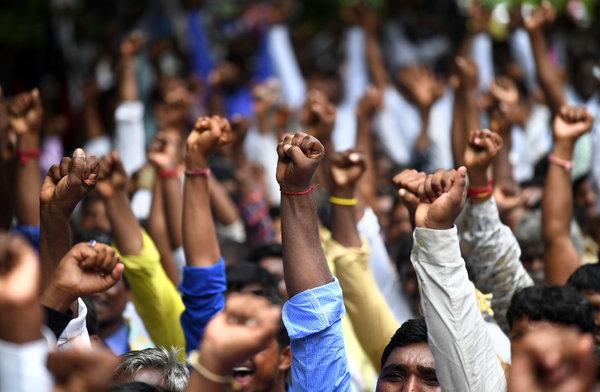The Bharatiya Janata Party’s rule came with an attack on Dalits and the minorities. Now Dalit leaders are fighting back to defeat the Hindu nationalists.
By Meena Kandasamy
Ms. Kandasamy is a poet and a novelist.
And there was another factor: The Dalits, India’s most oppressed community, whom the Hindu caste system relegates to the lowest rung, doubled their votes for his Bharatiya Janata Party to 12 percent in 2014 from 6 percent in 2009.
To make up for centuries of violence, discrimination and lack of opportunity, India’s Constitution lays out that political parties can field only Dalit candidates for 84 out of 543 parliamentary seats in general elections. Five years earlier, Mr. Modi’s B.J.P. won 40 of the 84 seats reserved for the Dalits, sending the single largest contingent of Dalit lawmakers to the Parliament.
But neither increased Dalit votes nor the greater number of Dalit lawmakers within the B.J.P.’s ranks helped transform the party’s aggressive, casteist ideology. Mr. Modi’s rule has highlighted the antagonism between his party’s pandering to the dominant upper castes and the radicalism of Dalits fighting for the elimination of caste.”
Source: Opinion | India’s Most Oppressed Get Their Revenge – The New York Times
